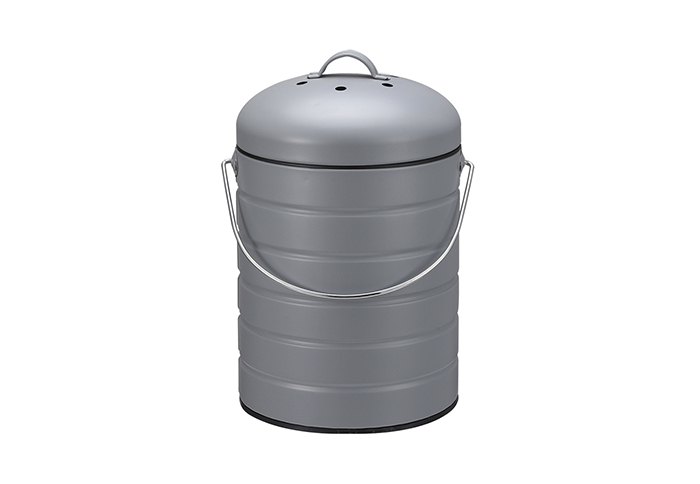Cultivating sustainability: a comprehensive guide to compost bins
In the pursuit of sustainable living and responsible waste management, the compost bin stands as a fundamental tool, transforming kitchen and garden waste into nutrient-rich compost. This comprehensive guide aims to shed light on the intricacies of the compost bin, exploring its definition, extolling the advantages it brings to environmental conservation, detailing the various types available, uncovering its diverse applications, and concluding with a practical Compost Bin Buying Guide to assist you in adopting a greener and more eco-friendly lifestyle.
What is a Compost Bin?
A compost bin is a container specifically designed for the purpose of composting, a natural process that transforms organic waste into nutrient-rich fertilizer. Composting involves the decomposition of kitchen and garden waste through the action of microorganisms, resulting in a valuable soil conditioner that enhances plant growth. Learn more about What is a Compost Bin?
We are a professional Compost Bin manufacturer in China, we provide high quality professional Compost Bin and provide OEM/ODM customization services.

Advantages of Compost Bin:
Waste Reduction: One of the primary advantages of a compost bin is its role in reducing kitchen and garden waste. By composting organic materials like fruit and vegetable scraps, coffee grounds, and yard trimmings, individuals can divert a significant portion of their waste from landfills.
Nutrient-Rich Soil: Compost produced in a compost bin is a nutrient-rich soil amendment. When incorporated into gardens or used as a top dressing for plants, compost enhances soil fertility, structure, and water retention.
Environmental Conservation: Composting contributes to environmental conservation by reducing the need for conventional waste disposal methods, such as incineration or landfilling. This, in turn, helps mitigate greenhouse gas emissions and soil degradation.
Cost Savings: Utilizing compost produced from a compost bin eliminates the need for store-bought fertilizers. This not only saves money but also promotes a sustainable and self-sufficient approach to gardening and landscaping.
Closed Nutrient Cycle: Composting completes a closed nutrient cycle by returning organic matter to the soil. This process mimics natural ecosystems, fostering a sustainable and regenerative approach to agriculture and horticulture.
Types of Compost Bin:
Traditional Compost Bins: These are stationary bins often made of plastic, wood, or metal. They come in various sizes and designs, with lids and ventilation features to facilitate the composting process.
Tumbling Compost Bins: Tumbling bins are mounted on a frame that allows them to be rotated or turned. This design aids in aerating the compost, speeding up the decomposition process.
Vermicompost Bins: Vermicomposting utilizes worms (usually red worms) to break down organic matter. Vermicompost bins are specially designed to house these worms and create nutrient-rich vermicompost.
Compact Indoor Composters: Designed for urban dwellers or those with limited outdoor space, these composters are compact and often use aerobic composting methods. Some are electric and accelerate the composting process.
Bokashi Bins: Bokashi composting is an anaerobic fermentation process. Bokashi bins are airtight containers that use specific microbial cultures to ferment kitchen waste before it is added to a traditional compost bin.
DIY Pile Composting: While not a traditional bin, many individuals compost by creating a pile in their backyard. This method requires regular turning and monitoring to ensure proper decomposition.
Applications of Compost Bin:
Backyard Gardening: Compost produced in a compost bin is a valuable soil amendment for backyard gardens. It enhances soil structure, provides essential nutrients, and promotes overall plant health.
Landscaping: Compost can be used as a top dressing for lawns and landscaping. Its ability to improve soil fertility and water retention makes it an excellent choice for maintaining lush and healthy outdoor spaces.
Indoor Plants: Compost produced in smaller compost bins or vermicomposters is ideal for nourishing indoor plants. It provides a natural and nutrient-rich alternative to synthetic fertilizers.
Community Gardens: Compost bins are valuable additions to community gardens, promoting sustainable gardening practices and reducing the environmental impact of waste disposal.
Agricultural Practices: On a larger scale, compost produced from industrial composting facilities or compost bins can be incorporated into agricultural practices, improving soil quality and promoting sustainable farming methods.
Compost Bin Buying Guide:
Size and Capacity: Consider the amount of kitchen and garden waste your household generates to determine the appropriate size of the compost bin. Larger bins are suitable for those with more extensive waste production.
Material: Compost bins are available in various materials, including plastic, wood, metal, and recycled materials. Consider durability, insulation properties, and aesthetic preferences when choosing the material.
Aeration and Ventilation: Proper aeration and ventilation are crucial for the composting process. Look for bins with adequate ventilation features, and consider tumbling bins or designs that facilitate air circulation.
Ease of Use: Choose a compost bin that aligns with your level of commitment and involvement in the composting process. Tumbling bins may require less manual turning, while traditional bins offer simplicity.
Indoor or Outdoor Use: Determine whether you need a compost bin for outdoor use
